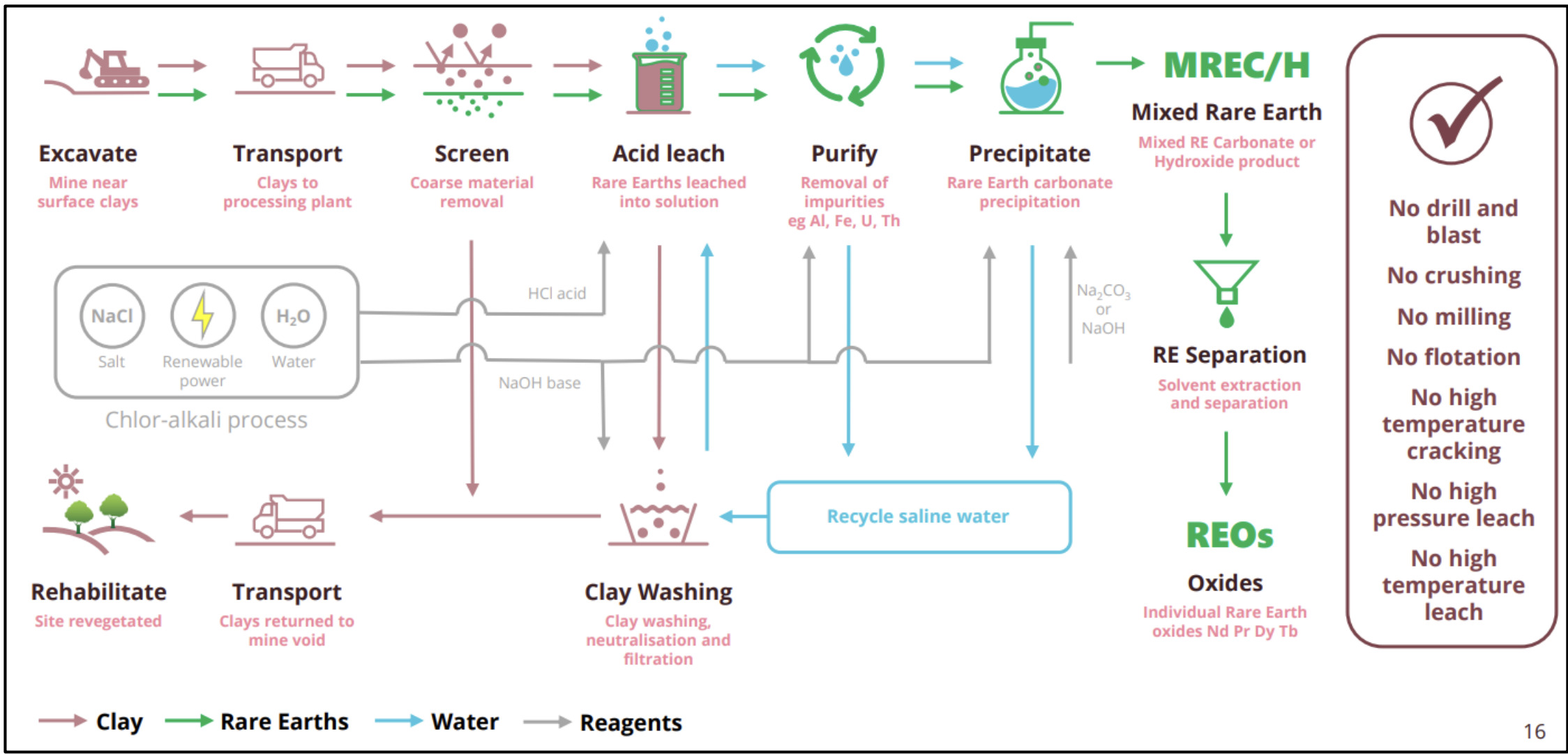Metallurgical test work illuminates the path forward at OD6 Metals’ Splinter Rock project

It’s clear path forward for OD6 at Splinter Rock after proposed processing plans were validated. Pic via Getty Images
- Metallurgical test results confirm low hydrochloric acid consumption at Splinter Rock, returning an average 6kg HCl/t ore with multiple zones at 6-10kg HCl/t ore
- Positive acid consumptions and recoveries when combined with high grades, low stripping ratios, and substantial tonnages provide considerable confidence in the key economic drivers
- Further metallurgical processing optimisation work is under way
Special Report: Metallurgical tests conducted by the Australian Nuclear Science Organisation (ANSTO) have confirmed low acid consumption at OD6’s Splinter Rock project near Esperance in WA.
OD6 Metals’ (ASX:OD6) Splinter Rock project in WA is emerging as one of the largest, highest-grade clay-hosted rare earths projects in Australia.
The project hosts a 344Mt resource at 1,308ppm TREO, which was unveiled less than one year after first drilling a handful of near-surface, 60-70m thick mineralised clay basins.
In comparison to hard rock resources, clay rare earths deposits contain an optimal mix of rare earth elements (REEs) needed for permanent magnets – a booming market thanks to their use in EVs and wind turbines.
These deposits are potentially easier and more cost effective to mine.
Metallurgical test work
Around 10 samples were selected from a wide variety of clay and non-clay types at Splinter Rock to test the various mineral recovery variations across four main prospects including Prop, Centre, Scrum and Flanker.
These prospect areas are characterised by a combination of ionically adsorbed, acid soluble and refractory REEs.
Samples were selected based on differing geographic location, REE grade, colour, chemical composition, AEM conductivity, proximity to granite, basinal position (including paleo valley/channel positions) and inferred different geological genesis.
ANSTO was engaged to complete the second phase of Splinter Rock metallurgical testing given their extensive experience in rare earth process development.
Impressive leach and recovery responses
Acid optimisation leach tests were conducted under three new acidic conditions on each sample (10, 15 and 20g/L hydrochloric acid) at notionally ambient temperature and pressures, over a 24-hour period with interim 6, 9 and 12-hour liquor samples to determine leaching kinetics.
Results indicated that:
- REE extraction increases with acidity;
- Extractions at 15-20g/L HCl appear to be a balance point on recovery, acid strength and acid consumption;
- Each prospect and mineralisation type has slightly different optimal acid conditions;
- There is a notable outlier in Sample SR149A which has both high recovery and high acid consumption; and
- Neodymium (Nd), praseodymium (Pr), terbium (Tb) and dysprosium (Dy) have very similar recoveries for each test which is reflected in overall Magnetic Rare Earth (MagRE) percent recovery
The average overall acid consumption was 16kg/t with a 61% MagRE Recovery at 20g/l HCl with results from this program demonstrating that utilising the fusion digest assay technique can increase head grade by up to 30% over a four-acid leach assay.
With these results in tow, the explorer is proposing a simplified processing map to deliver rare earth products based on the test work completed to date.
Central to the flowsheet is the use of a site based chlor-alkali facility which utilises salt and water to produce two reagents, namely hydrochloric acid (HCl) and sodium hydroxide (NaOH).

HCl is used to leach the rare earth elements, then NaOH is used to remove impurities, precipitate a mixed rare earth product (MREC/H) and neutralise the clays prior to in-pit disposal.
Future development planning
“These low acid consumption numbers are very positive, validating our proposed processing route and providing confidence in future potential process economics,” OD6 managing director Brett Hazelden says.
“This represents a key value lever as we continue to tick all the major boxes that pave the way for project development success.
“As part of future development planning, we have engaged vendors and experts on potentially owning and operating a site-based chlor-alkali facility.
“Initial discussions suggest this route can provide the lowest ongoing operating cost over time, which is important, as we envisage Splinter Rock growing to a multigenerational project, powered by low operating cost renewable energy sources.”
This article was developed in collaboration with OD6 Metals, a Stockhead advertiser at the time of publishing.
This article does not constitute financial product advice. You should consider obtaining independent advice before making any financial decisions.
Related Topics

UNLOCK INSIGHTS
Discover the untold stories of emerging ASX stocks.
Daily news and expert analysis, it's free to subscribe.
By proceeding, you confirm you understand that we handle personal information in accordance with our Privacy Policy.








